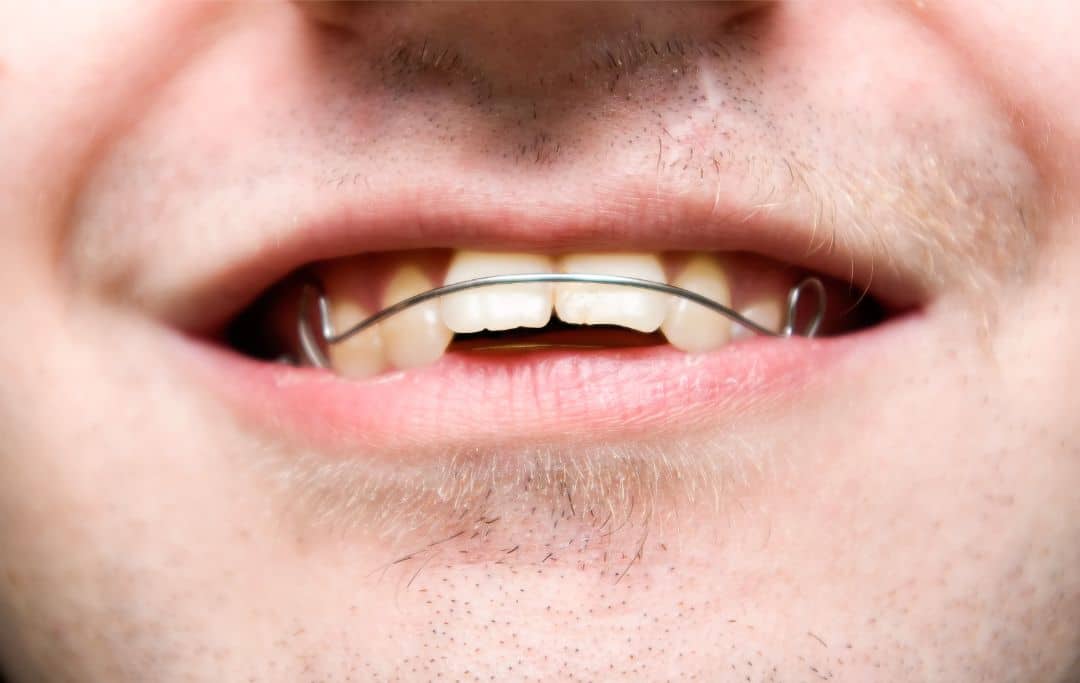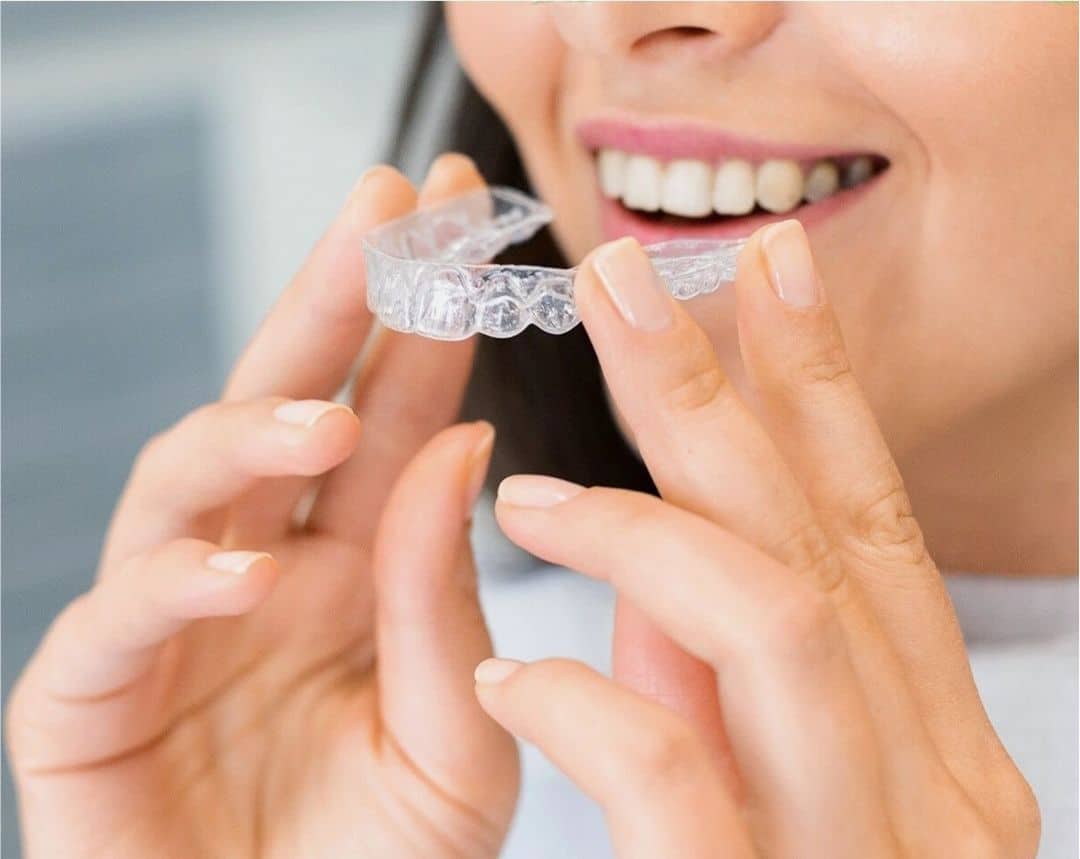Orthodontics in Hamilton NZ inc. Invisalign
Orthodontics focuses on the treatment of malocclusions (improper bites) which may be a result of crooked teeth and poor jaw relationships.
Dr Dave Blom is a Dental Surgeon who has been treating orthodontic cases for 25 years. He will be able to advise you on the best course of treatment given your particular circumstances while working closely with our orthodontic team to deliver fantastic results.
We are also pleased to be able to offer Invisalign as an alternative solution to traditional braces.
Who needs orthodontic treatment?
Orthodontic treatment is beneficial for individuals of all ages who have issues with tooth alignment or jaw relationships. Children, particularly those who are 12 years or older, are often ideal candidates as this is typically when the permanent teeth have come in and any alignment issues can be easily spotted.
It's also beneficial for adults who may have missed out on orthodontic care during their childhood or who have seen their teeth shift over time. In some cases, orthodontic treatment is necessary to rectify issues affecting eating, speaking, or oral hygiene. Moreover, many people seek orthodontic treatment for aesthetic reasons, desiring a straighter, more confident smile. Ultimately, the need for orthodontic treatment varies from person to person and is best determined by a dental professional.
Common orthodontic problems

Orthodontic problems, also known as malocclusions, can vary greatly between individuals, with some issues being minor while others can significantly impact oral health and functionality. Let's look at some of the most common orthodontic problems that Dr Dave Blom encounters in his practice in Hamilton, NZ.
- Overbite: This occurs when the upper front teeth overlap with the lower front teeth. Although some overlap is normal, an excessive overbite can lead to gum irritation, wear on the lower teeth, and can cause jaw problems.
- Underbite: An underbite is characterised by the lower teeth extending out past the upper front teeth. It can result in an imbalanced facial appearance, difficulty in chewing, and premature wear of the teeth.
- Crossbite: A crossbite happens when the upper teeth close inside the lower teeth, leading to tooth stratification and misaligned jaw growth.
- Open bite: This condition leaves an opening between the biting surfaces of the front and/or side teeth when the back teeth bite together, often due to prolonged thumb sucking or tongue thrusting.
- Misplaced midline: This is when the centre of your upper front teeth does not line up with the centre of your lower front teeth.
- Spacing: Spaces between teeth can occur with continued thumb sucking, missing teeth, or teeth that do not "fill up" the mouth.
- Crowding: This occurs when there are too many teeth for the dental ridge to accommodate.
Why might I need braces?
The need for braces is primarily down to poorly aligned teeth and jaws. This can result in poor breathing patterns, difficult-to-clean teeth, speech difficulty and a poor self-image due to a crooked smile.
Types of Braces
There are several types of braces available to correct a variety of orthodontic issues. Traditional metal braces are the most common type, known for their efficiency in correcting severe malocclusions. Ceramic braces are similar to metal braces but have clear or tooth-coloured brackets that blend in with the teeth for a more discreet treatment. Lingual braces are placed on the inside of the teeth, making them virtually invisible, however, they may take longer to adjust to and clean. Clear aligners like Invisalign are a series of custom-made, removable plastic trays that gradually shift the teeth into the correct position. These are popular among adults due to their near invisibility and comfort.
Can I get Invisalign at Hamilton Dental?
Absolutely. Here at Hamilton Dental, we are a registered provider of Invisalign.
What is Invisalign and how does treatment work?

Invisalign has helped to improve the smiles of over 12 million people worldwide and counting.
Some Invisalign treatments can be completed in as little as four months, but depending on the complexity of your case your Invisalign treatment could take longer, with treatment times often ranging between 12 and 18 months.
Invisalign is a popular option as it has been found to be more comfortable for many patients than traditional braces. The Invisalign aligners can be easily removed for eating or playing sports, making them an extremely practical option, especially for active teens.
Invisalign are customised for every patient, creating a unique aligner that is specific to your teeth. The SmartForce attachments apply the right amount of gentle force that helps to move teeth to their desired position.
As the name suggests, Invisalign aligners are discreet. They are clear and virtually invisible, helping to make complex tooth movements possible without braces.
Can I find out more about Invisalign?
You can talk to the team at Hamilton Dental on your next visit about the benefits of Invisalign and they can also provide you with some information about the cost of Invisalign.
There is also lots of information available on the Invisalign website where you can take a free Smile Assessment and discover some frequently asked questions.
Orthodontic Treatment Procedure
The orthodontic treatment process starts with a comprehensive dental examination, including X-rays and photographs of the face and teeth. This is used to develop a personalised treatment plan. Once the braces are fitted, regular follow-up appointments are scheduled to adjust the braces and monitor the progress. After the braces are removed, retainers are worn to prevent the teeth from shifting back to their original positions. The length of treatment varies depending on the severity of the issue but generally ranges from 18 months to three years.
Orthodontic Care at Home
Maintaining good oral hygiene is crucial during orthodontic treatment. Brushing and flossing daily helps to avoid plaque build-up and tooth decay. Specialised brushes and floss are available to clean around braces. Avoiding hard and sticky foods that could damage braces is also recommended. Regular dental check-ups should be continued alongside orthodontic treatment for optimal oral health.
Despite the challenges that braces may present, the benefits they offer in terms of improved oral health and aesthetics are significant. The journey to a straighter smile and better oral health begins with a consultation with an orthodontic professional like Dr Dave Blom.
Advantages and disadvantages of orthodontics
Orthodontics, an essential branch of dentistry, focuses on correcting teeth and jaws that are improperly positioned. This field offers a variety of treatment options, each with its advantages and disadvantages. Understanding these can help patients make informed decisions about their orthodontic care.
Advantages of Orthodontics
- Improved Oral Health: Straight teeth are easier to clean, reducing the risk of gum disease and tooth decay.
- Enhanced Appearance: Orthodontic treatment can dramatically improve a person's smile, bolstering self-confidence.
- Better Functionality: Correcting bite issues makes it easier to chew and speak.
- Prevention of Dental Problems: By aligning the teeth and jaws, orthodontics can prevent long-term wear and tear, protecting against future dental issues.
Disadvantages of Orthodontics
- Discomfort: Braces and aligners can initially cause discomfort and irritation to the gums and cheeks.
- Dietary Restrictions: Certain foods that can damage braces, such as hard or sticky foods, must be avoided.
- Lengthy Treatment Time: Depending on the severity of the issue, treatment can take several years.
- Cost: Orthodontic treatments can be expensive, and not all insurance plans cover them.
Why choose Hamilton Dental Centre for orthodontic procedures?
At Hamilton Dental Centre, our team of professional dentists possesses a wealth of experience in various aspects of orthodontics. The collective experience of our practitioners spans numerous years, during which they've kept themselves updated with the latest advancements in dental technology and practices. Whether it's a simple case of tooth realignment or a complex jaw correction procedure, our specialists have a proven track record of successfully addressing a wide range of orthodontic issues.
Our approach to dentistry is rooted in the belief that every patient is a part of the Hamilton Dental family. We understand that a trip to the dentist can be daunting for many, especially for children. Thus, we strive to create a warm, welcoming atmosphere that puts our patients at ease. Our dentists take the time to explain each procedure in detail, ensuring that our patients and their families are comfortable and well-informed. At Hamilton Dental Centre, we believe in treating our patients with the same care and compassion we would our own families.
Orthodontic FAQs
Here are some of the most frequently asked questions when it comes to orthodontics at Hamilton Dental Centre:
Related Posts
Want to find out more?
Request an appointment or drop us a line today.
You Might Also Be Interested In
Site map
Services
Contact Us
T: 07 854 8905
E: info@thehdc.co.nz
3/111 Thomas Road,
Rototuna, Hamilton
copyright © 2021 Hamilton Dental Centre | Credit Terms | Web development by Digital Hothouse


